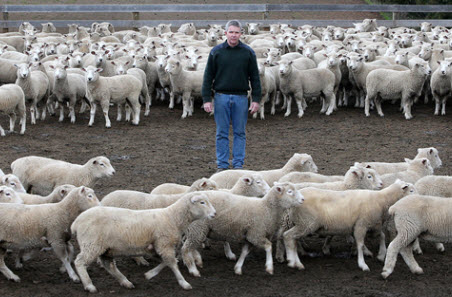A lamb for every market
07 November 2017

Tasmanian prime lamb producer Stephen Creese makes about 31,000 lamb marketing considerations a year and still manages to make the process look simple. He uses a combination of weights, specifications, timing and seasonal forecasts to direct sales to either supermarkets, export processors or as store lambs through the saleyards or privately to finishers.
The Managing Director of Clovelly Tasmania, who also has his own prime lamb operation at Tomahawk, north east of Launceston, believes that regardless of numbers, producers should all adhere to the same principle - supply what the customer wants.
“Don’t send them what they don’t want,” he said.
One of Tasmania’s largest prime lamb suppliers, Stephen manages Clovelly properties at Bridport, Gladstone, Perth and Longford.
He aims to produce a moderate-sized, fast-growing, well-muscled composite lamb using a Poll Dorset terminal sire over a mix of Coopworth, White Suffolk, Texel and Cashmore Oaklea genetics.
Lambing season starts in September with all lambs sold by 30 June. However, extensive irrigation under centre pivots, gives the operation flexibility.
“Ideally, we would like to sell everything we breed as prime lambs in Tasmania but market and seasonal conditions drive when and where we sell,” Stephen said.
To best match product to customer, Stephen weighs and drafts the lambs into three categories: those that are heavier than 25kg carcase weight, 22-24kg carcase weight and those that will meet supermarket specs late in the season or have the potential to be sold as store lambs.
“We usually forward contract about 25% to supermarkets, they’re keen to secure lambs early in the season and because of our volume, we need to secure kill space,” he said.
The heavier portion is usually sold to export processors such as Tasmanian Quality Meats, JBS Australia and Australian Lamb Company, while the lighter end will meet supermarket specs later on or be sold as store lambs.
“We can sell up to 15% of the drop as stores, it depends on the season,” Stephen said.
“How much rainfall we’ve had up to April 1 is how we decide whether to keep them or sell.
“If we’ve had a dry autumn we usually pull the sales trigger early.”
Selling stores to lamb finishers privately through an agent on a $/head basis is Stephen’s pressure release valve for the business with the priority being maintenance of breeders.
“Finishers with irrigation, and Tasmania has quite a few, are generally looking for more lambs around April so that works well for us,” he said.
Information:
Stephen Creese
E: stephen@creesenortheast.com.au


